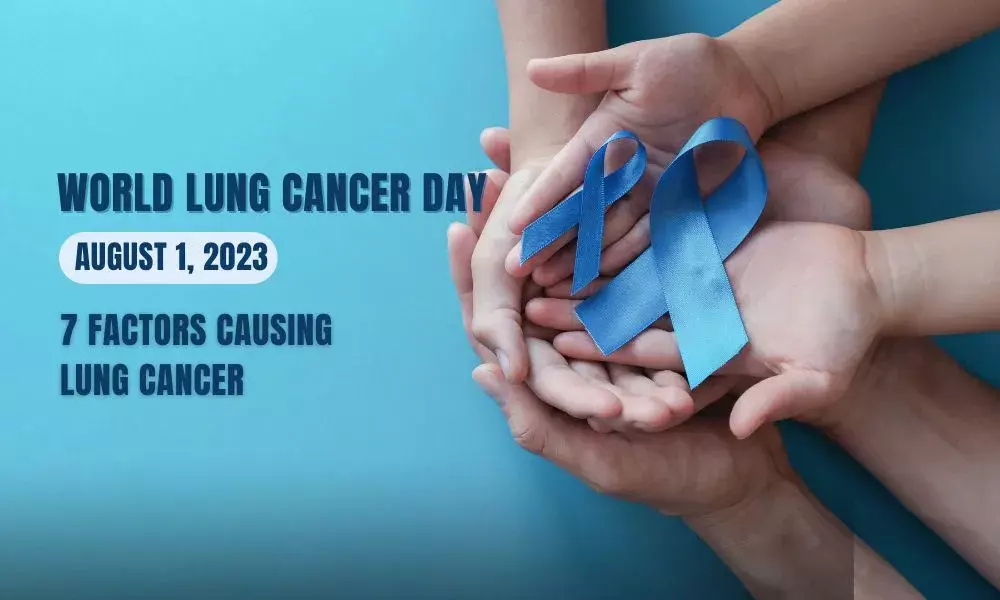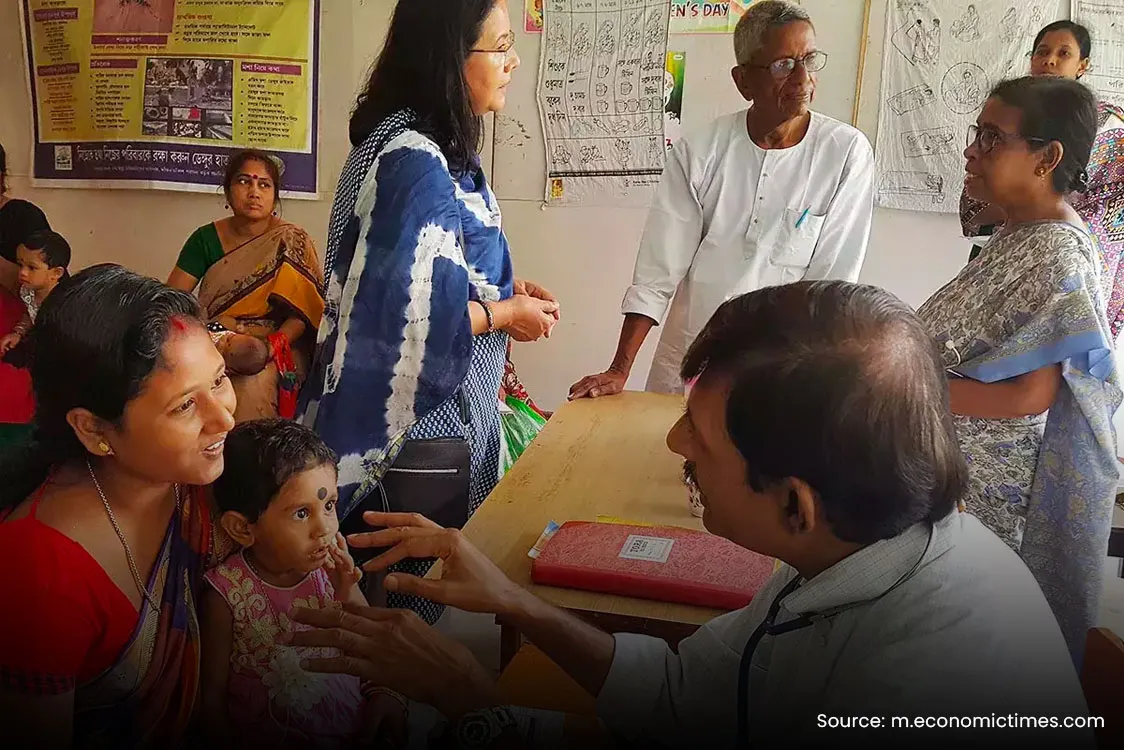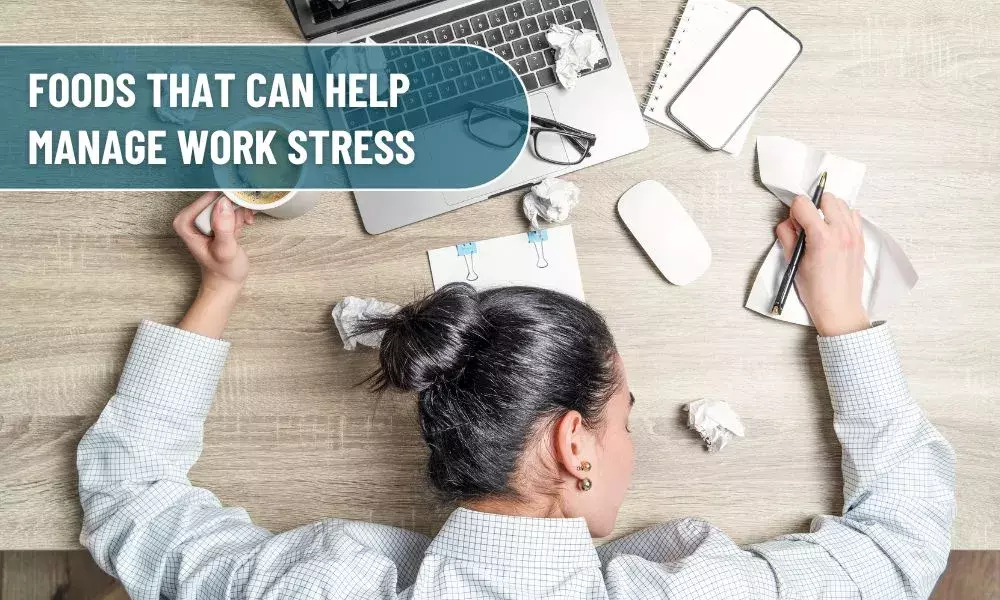August 1st every year is observed as World Lung Cancer Day to bring awareness about the deadly disease-causing millions of deaths across the globe.
Lung cancer has been reported to be the most common cause of cancer in the recent past; as per the WHO factsheet, lung cancer is one of the leading cancers causing 1.80 million deaths in 2020, being the highest than other cancers like Colon and Rectum causing 9,16,000 deaths and Liver Cancer amounting to 8,30,000 deaths*.
Generally, smoking is believed to be the primary cause of lung cancer. Although Smoking is the No. 1 risk factor for lung cancer worldwide, it’s important to remember that it is not always the cause. It is estimated that 20 percent of individuals who die from lung cancer every year have never smoked. Research has shown that many other factors, such as exposure to radon or asbestos, air pollution, and genetic mutations, are also significant contributors to lung cancer.
Here are Seven risk factors that can cause lung cancer.
-
Secondhand Smoke
You don’t have to light up a cigarette to be at risk for lung cancer. Just being in a room with folks who smoke can bring you closer to it. Nonsmokers also die from lung cancer caused by secondhand fumes. Being with a smoker can boost your odds of lung cancer by up to 30%.
-
Air Pollution
Pollution in the air is also one of the primary factors that may cause lung cancer. Smoke from car exhaust to coal-fired plants can trigger lung cancer. Bad air, as a whole, is a major problem that we are facing today. The air quality is deteriorating daily, causing chronic lung-related allergies and infections.
-
Asbestos & Radon
Asbestos has been officially classified as a cause of lung cancer. It’s been banned for new uses since 1989, but people weren’t aware of its dangers for centuries and continued using it. It was widely used to insulate and fireproof buildings. Individuals in the construction business, especially those who are working on older buildings, are at higher risk.
Radon comes from the breakdown of naturally-occurring radioactive elements (such as uranium and thorium) in soils and rocks. As part of the radioactive decay process, radon gas is produced. The gas moves up through the soil to the surface, where it can enter homes, schools and the workplace through cracks and other holes in the foundation. Radon is identified as the second most common cause of lung cancer in addition to Smoking.
-
Family History
Having lung cancer in the family tree increases the risk of an individual developing this disease. Such individuals should be extra careful about the quality of the air they breathe.
-
Radiation Therapy
In radiation therapy high dose of radiation is used to kill cancer cells. But despite all the good it can do; this treatment is considered a potential cause of secondary cancers. Lots of things can factor in, like the dosage, age of the patient, and the area treated, all play a role. It is suggested to discuss the risks and how to manage them with a doctor.
-
What You Eat
A high-carbohydrate diet leads to high blood sugar and insulin resistance and has been linked to lung cancer. It is advised to avoid foods high in the glycemic index, like white bread, potatoes, and white rice, to reduce the risk of developing cancer.
-
Viruses
People with HIV are more likely to get lung cancer. In addition to this, almost all cases of cervical cancer can also increase the risk of lung cancer. The measles virus has also been linked to causing and aggravating this cancer type.
Prevention
Lung cancer is fatal, and there are no guaranteed measures to prevent it. However, one can control the risk of developing it by below measures:
-
Smoking is a strict No. If one stops smoking, it can reduce the risk of lung cancer to a drastic level, even if an individual has been smoking for years.
-
Secondhand smoke should be avoided. One must avoid areas where people smoke, such as bars and restaurants.
-
One must get their home tested for radon levels, especially if the house is located in an area with a known radon problem. This can be treated to make the area radon free.
-
Precautions must be taken to keep oneself away from being exposed to toxic chemicals at work.
-
A balanced diet with a variety of fruits, vegetables, and food sources rich in vitamins and nutrients may help reduce the risk of cancer.
-
Lastly, an active lifestyle with exercise for a minimum of 20-30 mins daily can help an individual maintain good lung health.
Battling Cancer becomes easy when a cancer patient has someone to talk and to share. We invite cancer patients, survivors, and their relatives to join our vibrant Onco Cancer Care Community on Facebook. Let us join and make this journey great for each other.
Data Source: https://shorturl.at/krCSZ





